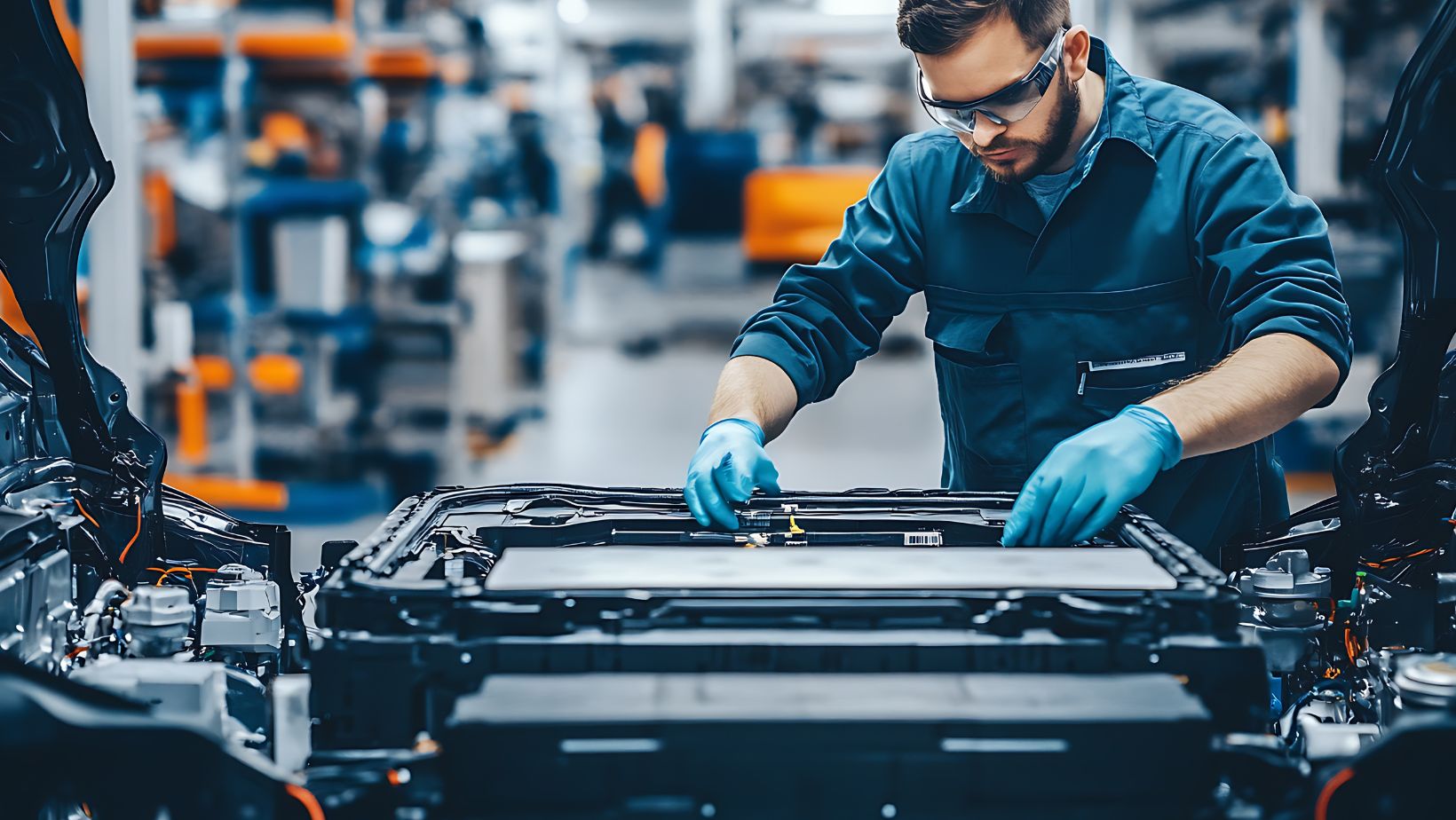Introduction: The Role of Mechanical Seal Technology in Modern Industry
Over the past two decades, mechanical seal technology has undergone transformative changes, driven by advances in materials science, engineering design, and evolving industrial demands. These seals play a vital role in preventing fluid leakage, maintaining pressure, and enhancing the safety and efficiency of rotating equipment across industries such as oil and gas, pharmaceuticals, chemical processing, and energy production.
As global industries strive for higher reliability, efficiency, and sustainability, mechanical seals have become more sophisticated. From the early 2000s to the present day, innovations in mechanical seal design and materials have significantly improved performance, durability, and adaptability. This article traces the technological evolution of mechanical seals over the last twenty years, highlighting the milestones and trends that continue to shape the future of sealing solutions.
The Early 2000s: Foundation of Modern Mechanical Seal Design
Mechanical seals were already widely accepted as essential parts of rotating equipment at the start of the twenty-first century. However, the majority of their design was based on conventional engineering methods, using standardized materials and little room for customization.
The main goal of mechanical seal innovations during this period was to increase operating dependability in typical scenarios. Manufacturers focused on preventing seal face wear, decreasing friction, and improving face designs. Because they are easier to install and maintain than previous component seals, cartridge seals have become more and more common.
Materials used for seal faces and secondary components included carbon, silicon carbide, and tungsten carbide, which offered sufficient durability but limited chemical resistance and temperature tolerance. The industry began to recognize the need for enhanced mechanical seal materials that could withstand increasingly harsh environments.
These foundational developments laid the groundwork for further mechanical seal innovation by creating a baseline of performance expectations and highlighting areas in need of improvement.
2010–2015: Innovation Driven by Industrial Demands
The period between 2010 and 2015 marked a critical phase of innovation in mechanical seal technology, spurred by heightened industrial demands and the need for greater efficiency.
This era saw significant mechanical seal design improvements as companies faced new challenges in extreme operating environments. Equipment was required to handle higher pressures, more corrosive fluids, and wider temperature ranges, particularly in the oil and gas and chemical processing industries. These demands prompted manufacturers to explore advanced seal face geometries, balanced seal configurations, and non-contacting designs, aiming to minimize wear and extend operational life.
Mechanical seal materials also saw important upgrades. Engineers began incorporating advanced polymers, composites, and hybrid materials that offered enhanced chemical resistance, thermal stability, and mechanical strength. Seals became more application-specific, allowing for tailored solutions rather than one-size-fits-all models.
Mechanical seal performance metrics improved during this period, with greater mean time between failure (MTBF) rates and reduced maintenance requirements. These improvements were essential for high-uptime industries where equipment failure could result in significant financial losses and safety risks.

Moreover, growing awareness of environmental impact led to a greater focus on leak prevention and regulatory compliance, particularly in volatile organic compound (VOC)-sensitive industries. As a result, the development of double seals and containment seals became more prevalent, offering additional layers of protection.
2016–2020: The Digital Shift and Smart Seals
By the mid-to-late 2010s, mechanical seal technology entered the digital age. As Industry 4.0 concepts gained traction, the integration of digital monitoring systems and smart technologies into sealing solutions became increasingly common.
Smart seals equipped with embedded sensors enabled real-time monitoring of operating conditions such as temperature, pressure, vibration, and leakage. This development represented a major leap in mechanical seal innovation, allowing predictive maintenance and reducing unplanned downtime. Facilities could now anticipate seal failures and schedule maintenance proactively, improving overall equipment effectiveness (OEE).
These innovations aligned closely with the broader trend of industrial automation and smart manufacturing. Mechanical seal development began to incorporate data analytics and Internet of Things (IoT) capabilities, transforming traditional components into intelligent systems.
Additionally, modern mechanical seals became more compact, efficient, and capable of operating in high-speed and high-pressure environments. Manufacturers leveraged computer-aided design (CAD) and simulation tools to optimize seal performance before physical production, reducing development cycles and improving accuracy.
Additionally, the usage of gas-lubricated and dry-running seals expanded, particularly in clean settings such as food processing and pharmaceuticals. By doing away with the requirement for liquid barrier systems, these designs improved environmental performance and decreased the danger of contamination.
2021–Present: Sustainable and High-Performance Seal Design
Since 2021, mechanical seal technology has placed a significant emphasis on excellent performance, efficiency, and sustainability. The convergence of technical maturity, regulatory pressure, and environmental responsibility characterizes this era.
Environmentally friendly mechanical seal materials are now widely used. Green composites, tailored polymers, and ceramics have all improved mechanical seals’ environmental impact without sacrificing or improving performance. Growing corporate responsibility in environmental, social, and governance (ESG) measures is reflected in the use of recyclable materials and sustainable production techniques in design considerations.
Modern mechanical seals are increasingly expected to operate in aggressive and diverse conditions, ranging from high-viscosity fluids in mining to cryogenic gases in aerospace. To meet these demands, seal designs have become stronger and flexible, with modular configurations allowing for easier customization and field servicing.
Another key area of concern is energy efficiency. Advanced hydrodynamic designs and low-friction seal faces cut energy consumption in compressors and pumps, which lowers operating costs and improves carbon footprints.
At the same time, digitization is still developing. Mechanical seals are being connected with cloud-based condition monitoring systems and AI-driven diagnostics to improve system visibility and facilitate remote asset management. A new benchmark for clever sealing solutions is being established by these advancements.
Key Drivers Behind Seal Technology Evolution
The rapid evolution of mechanical seal technology over the past two decades can be attributed to several key drivers:
- Industry-Specific Demands: Sectors such as oil and gas, pharmaceuticals, and energy production have stringent performance requirements, pushing the boundaries of traditional seal capabilities.
- Regulatory and Environmental Pressures: Increasingly strict environmental regulations and safety standards have compelled manufacturers to innovate more efficient, leak-proof, and compliant sealing systems.
- Material Science Advancements: Breakthroughs in materials science have led to more durable, chemical-resistant, and thermally stable seal materials, allowing for performance in more extreme conditions.
- Technological Convergence: Integration with digital technologies, IoT, and AI has transformed mechanical seals from passive components into intelligent system elements.
- Customization and Modularity: The shift toward modular and tailored sealing solutions has enabled better alignment with specific application needs and reduced total cost of ownership.
- Global Market Trends: Emerging markets, increased competition, and globalization have accelerated innovation cycles and prompted greater investment in R&D.
These factors have collectively shaped the direction of mechanical seal development and will continue to influence future trends.
What’s Next: The Future of Mechanical Seal Technology
Looking ahead, the mechanical seal industry is poised for even more significant innovation. The next generation of sealing solutions will likely emphasize:
- Predictive Maintenance: Enhanced use of AI and machine learning to predict failures with higher accuracy and automate maintenance schedules.
- Advanced Materials: Ongoing development of nanocomposites, self-healing materials, and smart polymers to further improve performance.
- Greater Sustainability: Continued focus on eco-conscious design, including biodegradable components and closed-loop lifecycle systems.
- Digital Twin Integration: Using digital twins to simulate seal behavior in real time, supporting proactive decision-making and design optimization.
- Adaptability for Renewable Energy: Mechanical seals designed for wind, solar, and hydrogen systems will become more common as the energy sector diversifies.
As mechanical seal technology continues to evolve, its role in achieving operational excellence, safety, and environmental responsibility will become even more central to modern industry.
Conclusion: A Transformative Journey in Sealing Solutions
Mechanical seal technology has evolved over the past 20 years from simple, standardized solutions to highly tailored, intelligent parts that satisfy the needs of contemporary industry. Mechanical seals are increasingly essential for improving operating efficiency, lowering environmental impact, and facilitating the transition to smart manufacturing thanks to continuous advancements in materials, design, and digital integration.
As industries continue to evolve and place greater emphasis on sustainability, reliability, and performance, the future of mechanical seal innovation looks promising. This journey of continuous improvement underscores the importance of embracing technological change and investing in the next generation of industrial sealing solutions.



